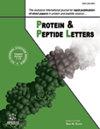下丘脑泌素在药物滥用和脑干觉醒中的意义。
IF 1
4区 生物学
Q4 BIOCHEMISTRY & MOLECULAR BIOLOGY
引用次数: 0
摘要
下丘脑外侧(LH)的下丘脑分泌素(食欲素,Hcrt)神经元广泛地投射到大脑中,因此负责下丘脑分泌素复合物的生理活动。下丘脑泌素参与觉醒和成瘾,脑干区域如蓝斑(LC)、副巨细胞(PGi)和中缝背(DR)参与这些功能。本文就Hcrt对药物滥用和脑干觉醒的影响作一综述。本文章由计算机程序翻译,如有差异,请以英文原文为准。
The Implication of Hypocretin in Drug Abuse and Arousal in the Brain Stem.
Hypocretin (orexin, Hcrt) neurons located in the lateral hypothalamus (LH) project widely into the brain and are thus responsible for the physiological action of the hypocretin complex. Hypocretin is involved in both arousal and addiction, and brainstem areas such as the locus coeruleus (LC), paragigantocellularis (PGi), and dorsal raphe (DR) contribute to these functions. In the present review, we focus on the effect of Hcrt on drug abuse and arousal in the brainstem.
求助全文
通过发布文献求助,成功后即可免费获取论文全文。
去求助
来源期刊

Protein and Peptide Letters
生物-生化与分子生物学
CiteScore
2.90
自引率
0.00%
发文量
98
审稿时长
2 months
期刊介绍:
Protein & Peptide Letters publishes letters, original research papers, mini-reviews and guest edited issues in all important aspects of protein and peptide research, including structural studies, advances in recombinant expression, function, synthesis, enzymology, immunology, molecular modeling, and drug design. Manuscripts must have a significant element of novelty, timeliness and urgency that merit rapid publication. Reports of crystallization and preliminary structure determination of biologically important proteins are considered only if they include significant new approaches or deal with proteins of immediate importance, and preliminary structure determinations of biologically important proteins. Purely theoretical/review papers should provide new insight into the principles of protein/peptide structure and function. Manuscripts describing computational work should include some experimental data to provide confirmation of the results of calculations.
Protein & Peptide Letters focuses on:
Structure Studies
Advances in Recombinant Expression
Drug Design
Chemical Synthesis
Function
Pharmacology
Enzymology
Conformational Analysis
Immunology
Biotechnology
Protein Engineering
Protein Folding
Sequencing
Molecular Recognition
Purification and Analysis
 求助内容:
求助内容: 应助结果提醒方式:
应助结果提醒方式:


